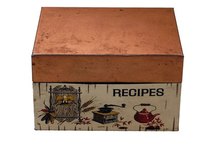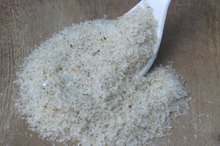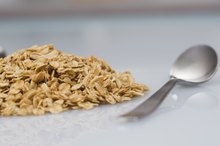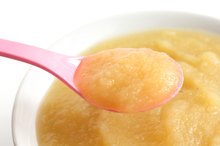How to Use Stool Softeners
Constipation is a common problem. If you have trouble passing hard stool or if your bowel movements only produce small dry feces, you are constipated. The National Digestive Diseases Information Clearinghouse (NDDIC) estimates that “more than 4 million Americans have frequent constipation.” Over-the-counter laxatives are the most common treatment used to relieve constipation. A stool softener is a gentle type of laxative that is beneficial in treating constipation. Stool softeners work by causing the body to draw water into the intestines, where it is absorbed by fecal matter, making the feces soft and easier to pass through the intestines 1. Because stool softeners are gentle-acting, you will not experience the sudden emergency urges to relieve your bowels that are commonly felt with harsher laxatives 1.
Drink eight 8-oz. glasses of water or fruit juice, or a combination of both, throughout the day, on the day that you take a stool softener. For extra laxative effects, make one of your glasses of daily fluids a glass of prune juice.
How to Make Power Pudding for Constipation
Learn More
Eat high fiber foods, such as whole grains breads and rice, fruits and vegetables. High fiber foods add bulk to fecal matter and attract water to fecal matter, making it easier for feces to pass through the intestines.
Take a stool softener at night, before bedtime, with an 8-oz. glass of water or juice. Refer to the stool softener package for dosage directions. You can count the glass of water or juice that you drink with your stool softener as part of your eight glasses of fluids a day.
How to Use Miralax As a Detox
Learn More
Continue drinking eight glasses of fluids a day, eating a fiber rich diet and taking a nightly stool softener everyday, for up to one week, or until you have a successful bowel movement. According to Medline Plus, a service of the National Institutes of Health, stool softeners typically take effect within one to three days of treatment 1.
Tips
Generally, you are considered to be constipated if you have less than three bowel movements a week.
Warnings
Visit your doctor if home treatment with a stool softener does not cause you to have a bowel movement or if you are continuing to pass dry stools.
Do not take over-the-counter medications along with stool softeners without prior approval from your physician.
Stool softeners are intended for occasional use—do not take them for longer than seven days in a row without prior approval from your physician.
Do not give stool softeners to children who are under the age of six years old, without approval from a doctor.
Do not take stool softeners if you are pregnant or breastfeeding, or if you are experiencing unexplained abdominal pain, without approval from your physician.
Stool softeners may cause minor intestinal cramps, nausea or a sore throat. If the symptoms are severe or continue after you stop using the stool softener, visit your doctor.
Stop taking the stool softener and call your doctor immediately if you develop hives, fever, vomiting, severe abdominal pain or have trouble breathing or swallowing. These may be signs that you are having an allergic reaction to the stool softener.
Related Articles
References
Resources
Writer Bio
Rose Kivi has been a writer for more than 10 years. She has a background in the nursing field, wildlife rehabilitation and habitat conservation. Kivi has authored educational textbooks, patient health care pamphlets, animal husbandry guides, outdoor survival manuals and was a contributing writer for two books in the Uncle John’s Bathroom Reader Series.









